- Home
- Oliver Sacks
Seeing Voices Page 20
Seeing Voices Read online
Page 20
12. There has been one realm where sign language always continued to be used, all over the world, despite the changed habits and proscriptions of educators—in religious services for the deaf. Priests and others never forgot the souls of their deaf parishioners, learned Sign (often from them), and conducted services in Sign, right through the endless wrangles over oralism and the eclipse of Sign in secular education. De l’Epée’s concern was religious in the first instance, and this concern, with its prompt perception of the “natural language” of the deaf, has remained steadfast despite secular vicissitudes for two hundred years. This religious use of Sign is discussed by Jerome Schein:
That sign has a spiritual aspect should not surprise anyone, especially if one considers its use by silent religious orders and by priests in the education of deaf children. What must be seen to be fully appreciated, however, is its singular appropriateness for religious worship. The depth of expression that can be achieved by signing defies accurate description. The Academy Award won by Jane Wyman in 1948 for her portrayal of a deaf girl in Johnny Belinda undoubtedly owed much to her beautiful (and accurate) rendering of the Lord’s Prayer in Ameslan.
It is perhaps in the church service that the beauty of sign becomes most evident. Some churches have sign choirs. Watching the robed members sign in unison can be an awe-inspiring experience (Schein, 1984, pp. 144–145).
In October of 1989 I visited a deaf synagogue in Arleta, in Southern California, for the solemn Day of Atonement (Yom Kippur) services. More than 200 people had gathered there, some coming from hundreds of miles away. A few people spoke, but the entire service was in Sign; the rabbi, the choir, and the congregants all signed. At the reading of the Law—the Hebrew Torah is written on a scroll, and portions of this are read by different congregants—this “reading aloud” took the form of signing, a fluent translation of biblical Hebrew into Sign. Some extra, special prayers had been added to the service. At one point, where there is a communal atonement, of the form “We have done this, we have done that; we have sinned through doing this, we have sinned through doing that …” an extra “sin” was added: “We have sinned through being impatient with the hearing when they failed to understand us.” And an extra prayer of thanksgiving was thrown in: “Thou hast given us hands, that we might create language.”
The Sign was especially astonishing; I had never before seen such large sweeping signs, or signs in unison—nor had I seen signing not in the usual sign-space used for human, social discourse, but high up, above the shoulders, towards Heaven, to God. (There was an atmosphere of great devotion, although, just in front of me, there was a middle-aged woman gossiping on the hands with her daughter, nonstop, a Sign yenta who reminded me of the murmuring and nattering of synagogues at home.)
The congregants gathered long before the service, and stayed till long after—it was an important social and cultural, as well as religious, event. Such congregations are exceedingly rare, and I could not help wondering how it would be for a deaf child to be brought up in Montana or Wyoming, without a deaf church or deaf synagogue in thousands of miles.
13. This happened not only in the United States, but throughout the world—even de l’Epée’s school, when I visited it in 1990, had become rigidly “oral” (de l’Epée, I felt, was surely turning in his grave).
14. I regret that I have not had a chance to discuss this with Carol Padden and Tom Humphries, who being themselves both deaf and scientists, are in a position to see these events both from the inside and the outside; they have provided, in their chapter on “A Changing Consciousness” in Deaf in America, the most insightful short account of changing attitudes to the deaf, and among the deaf, in the past thirty years.
15. Stokoe, 1980, pp. 266–267.
16. But Klima and Bellugi relate how, at a 1965 conference, when Chomsky spoke of language as “a specific sound-meaning correspondence,” he was asked how he would consider the sign languages of the deaf (in terms of this characterization). He showed an open mind, said that he did not see why the sound part should be crucial, and rephrased his definition of language as a “signal-meaning correspondence.”
17. ASL lends itself extremely well to artistic use and transformation—far more so than any form of manually coded or signed English—partly because it is an original language, and therefore a language for original creation, for thought; and partly because its iconic and spatial nature especially allows comic, dramatic, and aesthetic accentuation (the last section of Klima and Bellugi’s book is especially devoted to “The Heightened Use of Language” in Sign). In ordinary discourse, however, few deaf people speak in pure ASL—most will bring in and incorporate expressions, signs, neologisms from signed English, as suits the needs of communication. Even though, in linguistic and neurological terms, ASL and signed English are wholly distinct, there is for practical purposes a continuum, from forms of signed English at one extreme, through various forms of “pidgin” signed English (PSE), to pure or “deep” ASL at the other.
18. Teachers and others are now being encouraged to speak and sign simultaneously; this method (“Sim Com”), it is hoped, can secure the advantages of both—in practice, though, it fails to do this. Speaking itself tends to be slowed down artificially, in order to allow the signs to be made, but even so, the signing suffers, tends to be poorly performed, and may in fact omit crucial signs—so much so that those for whom it is designed, the deaf, may find it unintelligible. It should be added that it is scarcely possible to sign ASL and speak simultaneously, because the languages are totally different: it is hardly more possible than speaking English and writing Chinese at the same time—indeed, it may be neurologically impossible.
19. But there has not yet been in the United States any official attempt to provide deaf children with a bilingual education—there have only been small pilot experiments (like that reported by Michael Strong in 1988). And yet, in contrast, as Robert Johnson observes, there has been a widespread and successful use of bilingual education in Venezuela, where this is a national policy and increasing numbers of deaf adults are being recruited as aides and teachers (Johnson, personal communication). Venezuelan schools have daycare centers where deaf children and infants are sent as early as they are diagnosed, to be exposed to deaf signing adults until they are old enough to go to nursery and grade schools, where they are instructed bilingually. A similar system has been set up in Uruguay. Both of these South American programs have already achieved notable success and hold out great promise for the future—they are, unfortunately, as yet virtually unknown to American and European educators (but see Johnson, Liddell, and Erting, 1989). The only other countries with bilingual programs for the deaf are Sweden and Denmark—where the native sign languages are officially recognized as “mother tongues” of the deaf. All of these show very clearly that one can learn to read perfectly well without speaking and that “total communication” is not a necessary intermediate between oral education and bilingual education.
20. The sociolinguist James Woodward is especially concerned with this theme. This increasing sense of cultural diversity, rather than a single fixed “norm,” with “deviance” to either side, goes back to a generous tradition of a century or more earlier; in particular to the viewpoint of Laurent Clerc (and this is another, even more fundamental reason why the students invoked his name, and felt that his was the spirit that guided the revolt).
Clerc’s teachings, until his death, had the effect of widening the nineteenth-century view of “human nature,” of introducing a relativistic and egalitarian sense of great natural range, not just a dichotomy of “normal” and “abnormal.” We speak of our nineteenth-century forebears as rigid, moralistic, repressive, censorious, but the tone of Clerc’s voice, and of those who listened to him, conveyed quite the opposite impression: that this was an age very hospitable to “the natural”—to the whole variety and range of natural proclivities—and not disposed (or at least less disposed than our own) to make moralizing or clinical judgments on
what was “normal” and what was “abnormal.”
This sense of the range of nature is apparent again and again in Clerc’s brief Autobiography (which is excerpted in Lane, 1984a). “Every creature, every work of God, is admirably made. What we find fault in its kind turns to our advantage without our knowing it.” Or, again, “We can only thank God for the rich diversity of his creation, and hope that in the future world the reason for it will be explained.”
Clerc’s concept of “God,” “creation,” “nature,”—humble, appreciative, mild, unresentful—is perhaps rooted in his sense of himself, and other deaf people, as different but nonetheless complete beings. It is in great contrast to the half-terrible, half-Promethean fury of Alexander Graham Bell, who constantly sees deafness as a swindle and a privation and a tragedy, and is constantly concerned with “normalizing” the deaf, “correcting” God’s blunders, and, in general, “improving on” nature. Clerc argues for cultural richness, tolerance, diversity. Bell argues for technology, for genetic engineering, hearing aids, telephones. The two types are wholly opposite but both, clearly, have their parts to play in the world.
21. A massive, illustrated Deaf Heritage: A Narrative History of Deaf America by Jack R. Gannon was published in 1981. Harlan Lane’s books, from 1976 onwards, not only presented the history of the deaf in stirring, dramatic terms, but were themselves “political” events, serving to give the deaf an intense (perhaps partly mythical) sense of their own past and an urge to regain the best of the past in the future. Thus they not only recorded history, they helped to make it as well (just as Lane himself was not just a recorder, but an active participant, in the 1988 revolt).
22. So, at least, the matter seemed to outside observers—the deaf revolting against the label of “disabled.” Those within the deaf community were inclined to put it differently, to assert that they had never seen themselves as disabled. Padden and Humphries are emphatic on this point:
“Disabled” is a label that historically has not belonged to Deaf people. It suggests political self-representations and goals unfamiliar to the group. When Deaf people discuss their deafness, they use terms deeply related to their language, their past, and their community. Their enduring concerns have been the preservation of their language, policies for educating deaf children, and maintenance of their social and political organizations. The modern language of “access” and “civil rights,” as unfamiliar as it is to Deaf people, has been used by Deaf leaders because the public understands these concepts more readily than ones specific to the Deaf community (Padden and Humphries, 1988, p. 44).
23. It should not be thought that even the most avid signer is against other modes of communication when necessary. Life for deaf people has been altered immensely by various technical devices in the past twenty years, such as closed captioned TV, and teletypewriters (TTY; now TDD, or telecommunication devices for the deaf)—devices that would have delighted Alexander Graham Bell (who had originally invented the telephone, partly, as an aid for the deaf). The 1988 strike at Gallaudet could hardly have got going without such devices, which the students exploited brilliantly.
And yet TTYs have a negative side, too. Before they were widely available, fifteen years ago, deaf people went to great lengths to meet each other—they would constantly visit each other’s homes, and would go regularly to their local deaf club. These were the only chances to talk with other deaf people; this constant visiting or meeting at clubs formed vital links which bound the deaf community into a close physical whole. Now, with TTYs (in Japan, faxes are used), there is much less actual visiting among the deaf; deaf clubs are starting to be deserted and empty; and a new, worrying tenuity has set in. It may be that TTYs (and closed captions or signed programs on television) give deaf people the sense of being together in an electronic village—but an electronic village is not like a real one, and the downfall of visiting and going to clubs is not readily reversed.
24. Although the choice of King Jordan delighted almost everyone, one faction saw his election as a compromise (since he was postlingually deaf), and supported instead Harvey Corson, superintendent of the Louisiana School for the Deaf, and the third finalist, who is both prelingually deaf and a native signer.
25. Though the level of political and public awareness in Europe may not yet match that in the United States, there are other ways in which the European deaf communities are more advanced. European signers are far more experienced, and far more skilled, than their American counterparts in establishing communication with deaf people from other countries—and this is the case not only between individuals, but at meetings where people with a dozen different sign languages may come together. There is an artificial, invented system of gestures and signs called Gestuno, on the analogy of Ido or Esperanto; but the real mode of communication is increasingly the so-called International Sign Language, which draws upon the vocabularies and patterns of everyone present, and is, so to speak, continually improvised and enriched between them. ISL has been evolving, becoming richer, more formalized, more language-like for three decades—although it is still, in essence, a contact language, a lingua franca. It should be stressed that such “interlingual” communication between the deaf, which can develop with remarkable rapidity and sophistication—far beyond anything which can occur with speakers of different tongues—is rather mysterious, and is a subject of intense investigation at this time.
Not only do European deaf people tend to travel a great deal—for they can overcome language barriers much more easily than the hearing do—they often marry deaf people from other countries, and thus much interlingual migration takes place. It would be improbable and difficult for a Welshman, say, to settle in Finland, or vice versa; but such migrations (at least within Europe) are not all that uncommon among deaf people. For the deaf community is a supranational one, not unlike the world community of Jews, or other ethnic and cultural groups. We may, in fact, be seeing the beginnings of a pan-European deaf community—a community which may well spread beyond Europe, because the deaf community spans the entire world.
This, indeed, became very evident at a remarkable international festival and conference of deaf people, the Deaf Way, held in July 1989 in Washington, D.C. This was attended by more than 5,000 deaf people, coming from more than eighty countries across the world. As one entered the vast lobby of the conference hotel, one could see dozens of different sign languages being used; yet, by the end of a week, communication among different nationalities was relatively easy—not the Babel which would surely have resulted with dozens of spoken languages. There were eighteen national theaters of the deaf—one could, if one wished, see Hamlet in Italian Sign, Oedipus in Russian Sign, or all sorts of new Sign plays in a dozen and a half different sign languages. An International Deaf Club was formed, and one saw the beginnings, or the emergence, of a global deaf community.
REFERENCES
Arlow, J. A. 1976. “Communication and Character: A Clinical Study of a Man Raised by Deaf-Mute Parents.” The Psychoanalytic Study of the Child 31: 139–163.
Baker, Charlotte, and Battison, Robbin, eds. 1980. Sign Language and the Deaf Community: Essays in Honor of William C. Stokoe. Silver Spring, Md.: National Association of the Deaf.
Bell, Alexander Graham. 1883. Memoir Upon the Formation of a Deaf Variety of the Human Race. New Haven: National Academy of Science.
Bellugi, Ursula. 1980. “Clues from the Similarities Between Signed and Spoken Language.” In Signed and Spoken Language: Biological Constraints on Linguistic Form, ed. U. Bellugi and M. Studdert-Kennedy. Weinheim and Deerfield Beach, Fla.: Verlag Chemie.
Bellugi, Ursula and Newkirk, Don. 1981. “Formal Devices for Creating New Signs in American Sign Language.” Sign Language Studies 30: 1–33.
Bellugi, U.; O’Grady, L.; Lillo-Martin, D.; O’Grady, M.; van Hoek, K.; and Corina, D. 1989. “Enhancement of Spatial Cognition in Hearing and Deaf Children.” In From Gesture to Language in Hearing Children, ed. V. Volterra and C. Erting. New York: Springer Verl
ag.
Belmont, John; Karchmer, Michael; and Bourg, James W. 1983. “Structural Influences on Deaf and Hearing Children’s Recall of Temporal/Spatial Incongruent Letter Strings.” Educational Psychology 3, nos. 3–4: 259–274.
Bonvillian, J. D., and Nelson, K. E. 1976. “Sign Language Acquisition in a Mute Autistic Boy.” Journal of Speech and Hearing Disorders 41:339–347.
Bragg, Bernard. 1989. Lessons in Laughter (as signed to Eugene Bergman). Washington, D.C.: Gallaudet University Press.
Brown, Roger. 1958. Words and Things. Glencoe, Ill.: The Free Press.
Bruner, Jerome. 1966. Towards a Theory of Instruction. Cambridge, Mass.: Harvard University Press.
———. 1983. Child’s Talk: Learning to Use Language. New York and Oxford: Oxford University Press.
———. 1986. Actual Minds, Possible Worlds. Cambridge, Mass., and London: Harvard University Press.
Bullard, Douglas. 1986. Islay. Silver Spring, Md.: T. J. Publishers.
Burlingham, Dorothy. 1972. Psychoanalytic Studies of the Sighted and the Blind. New York: International Universities Press.
Changeux, J.-P. 1985. Neuronal Man. New York: Pantheon Books.
Chomsky, Noam. 1957. Syntactic Structures. ’S-Gravenhage: Mouton.
———. 1966. Cartesian Linguistics. New York: Harper & Row.
———. 1968. Language and Mind. New York: Harcourt, Brace and World.
Church, Joseph. 1961. Language and the Discovery of Reality. New York: Random House.
Conrad, R. 1979. The Deaf Schoolchild: Language and Cognitive Function. London and New York: Harper & Row.
Corina, David P. 1989. “Recognition of Affective and Noncanonical Linguistic Facial Expressions in Hearing and Deaf Subjects.” Brain and Cognition 9, no. 2: 227–237.
Crick, Francis. 1989. “The Recent Excitement About Neural Networks.” Nature 337 (January 12, 1989): 129–132.

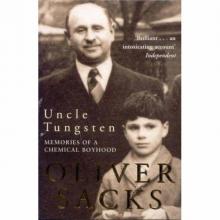 Uncle Tungsten
Uncle Tungsten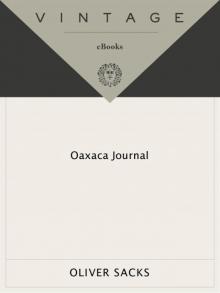 Oaxaca Journal
Oaxaca Journal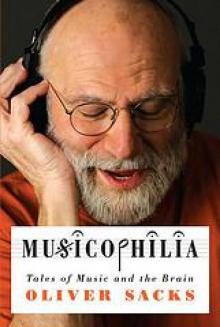 Musicophilia
Musicophilia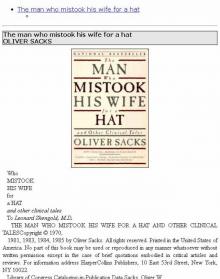 The man who mistook his wife for a hat
The man who mistook his wife for a hat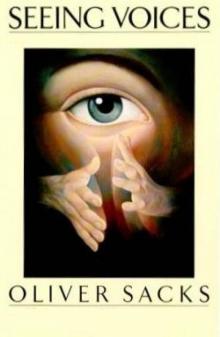 1989 - Seeing Voices
1989 - Seeing Voices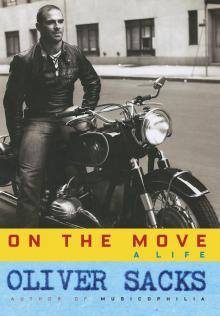 On the Move: A Life
On the Move: A Life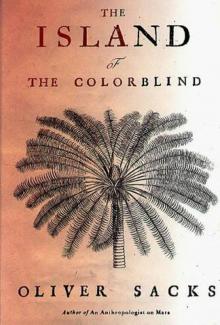 1996 - The Island of the Colorblind
1996 - The Island of the Colorblind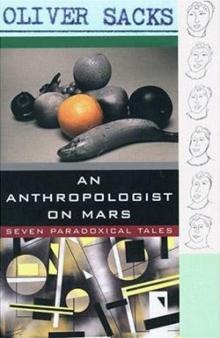 An Anthropologist on Mars: Seven Paradoxical Tales
An Anthropologist on Mars: Seven Paradoxical Tales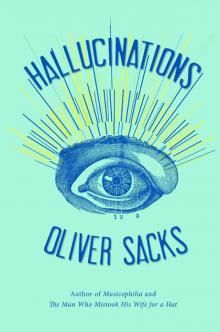 Hallucinations
Hallucinations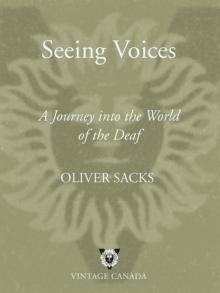 Seeing Voices
Seeing Voices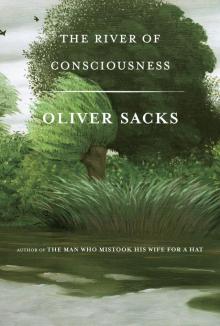 The River of Consciousness
The River of Consciousness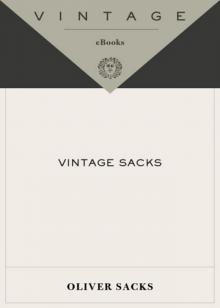 Vintage Sacks
Vintage Sacks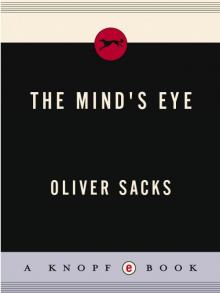 The Mind's Eye
The Mind's Eye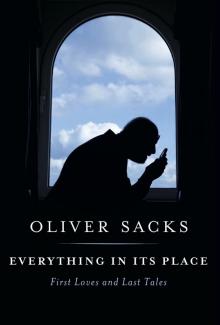 Everything in Its Place
Everything in Its Place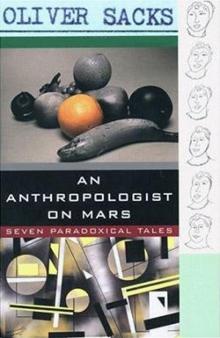 An Anthropologist on Mars (1995)
An Anthropologist on Mars (1995)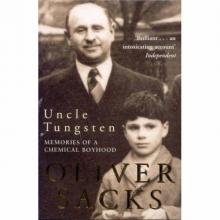 Uncle Tungsten: Memories of a Chemical Boyhood (2001)
Uncle Tungsten: Memories of a Chemical Boyhood (2001)